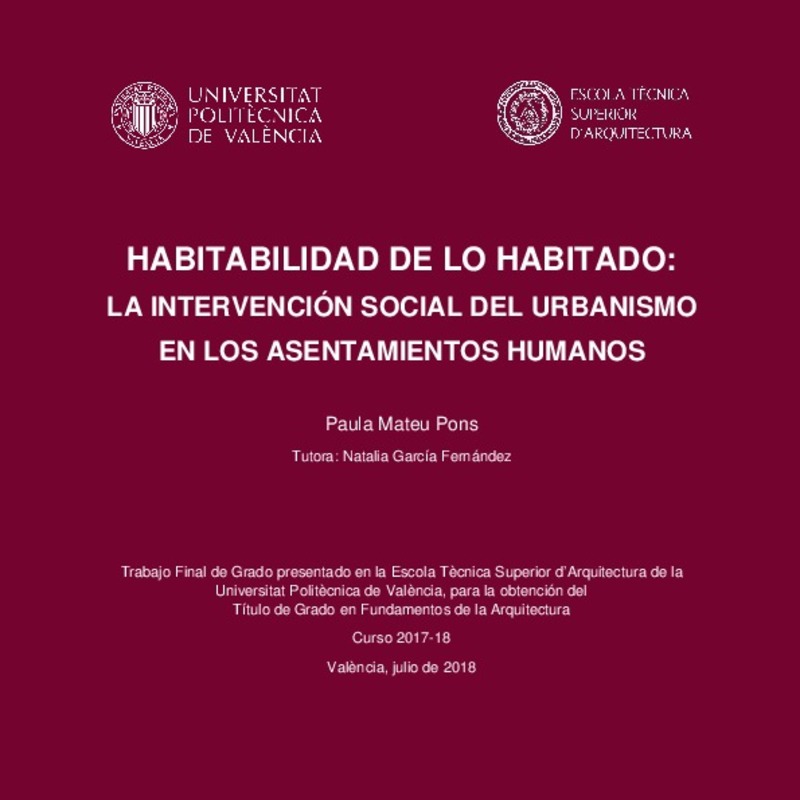JavaScript is disabled for your browser. Some features of this site may not work without it.
Buscar en RiuNet
Listar
Mi cuenta
Estadísticas
Ayuda RiuNet
Admin. UPV
Habitabilidad de lo habitado: la intervención social del urbanismo en los asentamientos humanos
Mostrar el registro completo del ítem
Mateu Pons, P. (2018). Habitabilidad de lo habitado: la intervención social del urbanismo en los asentamientos humanos. http://hdl.handle.net/10251/130935
Por favor, use este identificador para citar o enlazar este ítem: http://hdl.handle.net/10251/130935
Ficheros en el ítem
Metadatos del ítem
| Título: | Habitabilidad de lo habitado: la intervención social del urbanismo en los asentamientos humanos | |||
| Autor: | Mateu Pons, Paula | |||
| Director(es): | ||||
| Fecha acto/lectura: |
|
|||
| Resumen: |
[ES] En el presente Trabajo Final de Grado se plantea como objetivo realizar un análisis de los vínculos existentes entre la capacidad de superación de la pobreza y las diferentes formas de habitar el territorio, tanto ...[+]
[EN] The goal of this Degree Final Project is to analyse the links between the ability to overcome poverty and the different ways of inhabiting the territory, both urban and rural.
To achieve this aim, we evaluate the ...[+]
|
|||
| Palabras clave: |
|
|||
| Derechos de uso: | Reserva de todos los derechos | |||
| Editorial: |
|
|||
| Titulación: |
|
|||
| Tipo: |
|
recommendations
Este ítem aparece en la(s) siguiente(s) colección(ones)
-
ETSA - Trabajos académicos [4784]
Escuela Técnica Superior de Arquitectura





![PDF file [Pdf]](/themes/UPV/images/pdf.png)


